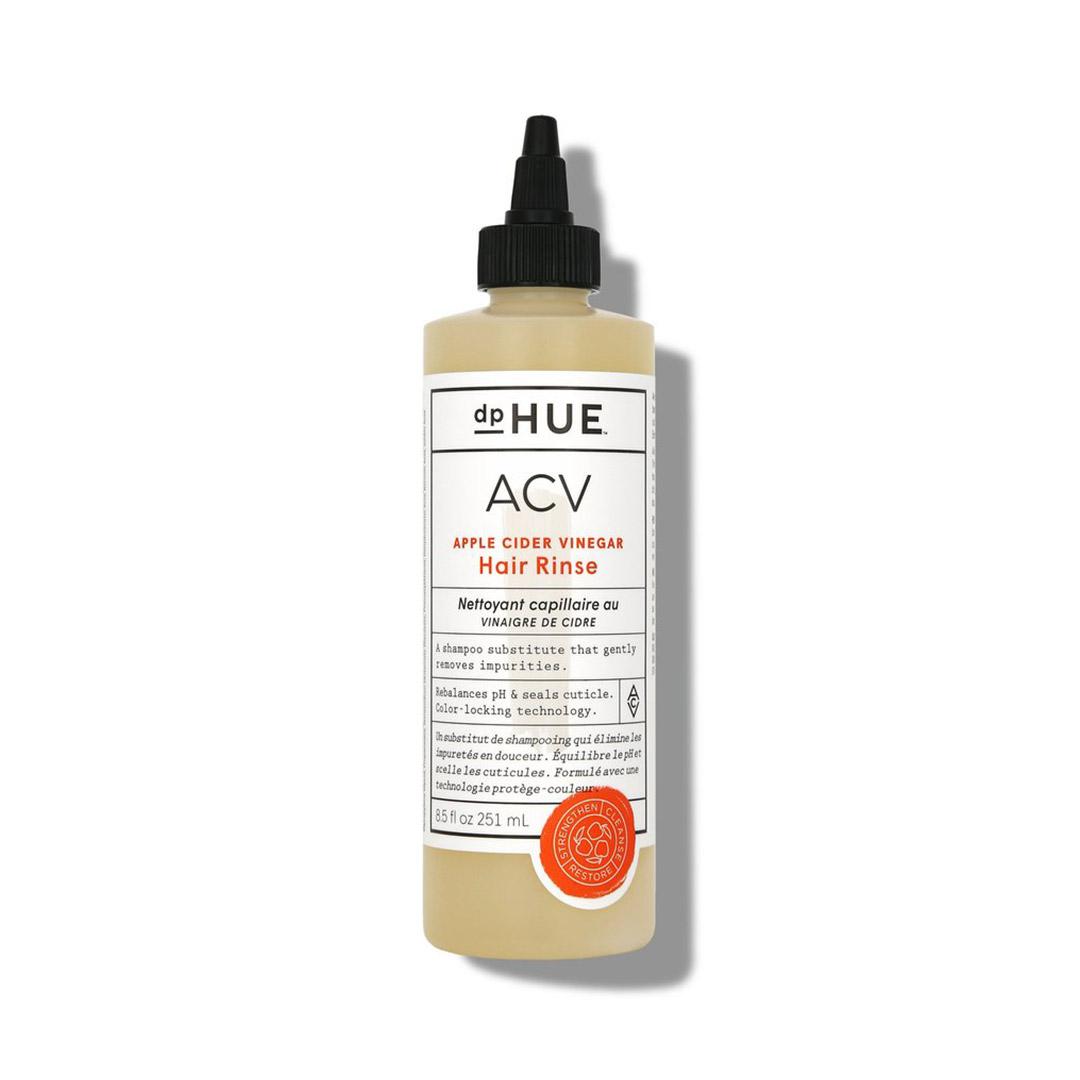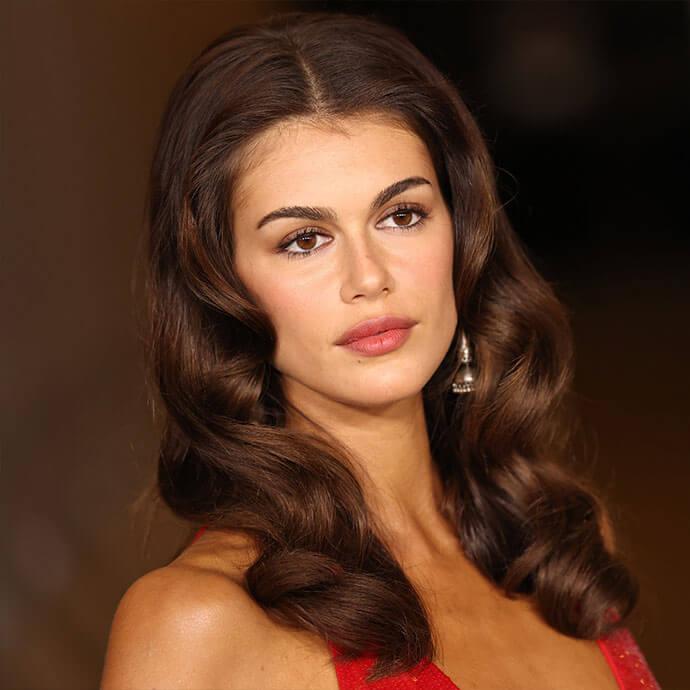Dealing with Oily Hair? Use These Expert Tips to Keep Your Roots Grease-Free



Cortney Clift


Does it often feel like you wash your hair only to have it feel greasy hours later? Some people simply have super active sebaceous glands (the small gland in the skin which secretes sebum into the hair follicles), making them more prone to greasy roots. For others, certain products or lifestyle choices may be contributing to this haircare woe.
In terms of specific ingredients to steer clear of, NYC-based hair stylist Susan Wu says, "I think everyone is a little different, I personally won’t really say there are ingredients that make the hair greasy. Instead, I'd recommend using the right products and remembering that a little goes a long way."
She also notes that while shampooing more frequently might seem like the best way to fix oily hair, this tactic may actually be doing more harm than good. (But more on that later.)
If you're looking to find ways to make your hair look and feel fresher for longer, we've got a few suggestions you might consider trying. With these expert tips in action, you just might be able to regulate sebum production and keep oily hair under control for good.


It's about glam time you treated yourself.
MEET THE EXPERT
Susan Wu is an experienced hairstylist at Self Salon in Brooklyn, NY. Explore more of her work on Instagram @hairbysuziiie.
10 Ways to Get Rid of Oily Hair
1. Experiment to find the right hair-washing schedule.
One of the biggest ways to avoid oily hair is to find the right wash schedule. While it may be tempting to wash your hair once or twice daily when dealing with oily hair, doing so may actually be what's causing it to be regularly greasy. If the scalp is stripped of its natural oils, it will go into overproduction mode to make up for what it has lost. On the other hand, going too long without washing will inevitably result in oil-slicked roots.
While there's no easy answer, try experimenting with different washing cadences to see how it affects your scalp's oil production. When in doubt, Wu recommends asking your stylist for advice on how long to try going between washes.
2. Wash, rinse, and repeat.
While using shampoo too often can be problematic, Wu does recommend double washing when it's time to use this hair essential. This method allows you to go longer between washes while making the results even more effective. The idea is that the first wash breaks oils and buildup in the hair, while the second wash gets them out completely.
3. Be selective with your shampoo formula.
Speaking of shampoo, the formula you use can make a big difference. You may want to avoid shampoos that specifically mention having extra hydrating, moisturizing, or smoothing benefits,as these may add too much moisture to your already oily scalp.
Instead, Wu suggests reaching for a volumizing shampoo as it will "balance your scalp and keep it healthy." Volumizing shampoo can also help to create lift, adding more space between the hair follicles and scalp—and with less contact comes less oil.
4. Only use conditioner on certain parts of the hair.
When it's time to apply conditioner, be sure to only apply it on the lower third portion of your hair (about the mid-shaft to the ends). The ends of your hair are primarily where softening and replenishing benefits are needed. By applying it to the roots, you're essentially adding conditioning oils to the part of the hair that's naturally oily.
5. Clean your hairbrush.
When was the last time you gave your hairbrush a thorough cleaning? Over time, the bristles and bed of your brush will become coated in oils and product build-up. Without a regular wash, those will transfer onto your hair from the brush.
Need a little guidance on how to properly clean your brushes? Check out our step-by-step guide on how to clean your hairbrushes.
6. Air-dry your hair whenever possible.
Using hot tools can contribute to greasiness in a number of different ways: First, the tools themselves may be dirty. Just like your hairbrush, these tools can pick up dirt and product build-up and redistribute them back onto freshly washed hair.
Using a straight iron specifically may also create greasy hair faster as it causes the hair to lay closer to the scalp, therefore making it come into contact with more oil than it may otherwise.
7. Steer free of silicone.
Silicone is a common ingredient in hair care products that coats the hair, leaving it feeling slick and smooth. However, as nice as they can make the hair feel, they can be difficult to fully wash out, often gradually causing build-up. And as build-up can contribute to greasy hair, this can trigger an endless cycle over time.
Instead, you might try using silicone-free products or looking for formulas that only use "good silicones" (e.g., dimethicone copolyol, stearoxy dimethicone, and behenoxy dimethicone). These types of silicone are water-soluble, so they'll rinse out easily to avoid build-up.
8. Add a few drops of tea tree oil or witch hazel to your shampoo formula.
To give your shampoo an extra leg up in the fight against greasiness, you might try adding a couple drops of tea tree oil or witch hazel to the amount you dispense into your hand. These ingredients are natural astringents, meaning they work to control oil production.
Tea tree oil's anti-inflammatory properties may be particularly helpful if you're also dealing with an irritated scalp from conditions like dandruff or psoriasis.
9. Try an apple cider vinegar rinse.
Looking for a solution that only uses natural ingredients to combat a greasy scalp? Apple cider vinegar can act as a natural clarifying shampoo, removing product buildup, balancing scalp pH, and reducing frizz.
However, if you decide to give this home remedy a try, it's super important to properly dilute the product before using it on the scalp. To create this DIY hair remedy, you'll want to mix one part ACV with five parts water in a spray bottle. Spritz the mixture onto the scalp and allow it to sit for a few minutes. Then rinse with cold water and use a little bit of conditioner on the ends. Repeat only about once a week or once every other week.
10. Turn down your shower temp.
A super hot shower is not only a skincare faux pas but a hair care no-go as well. Just like how hot water can dry out your skin, it can do the same to your scalp. And when your scalp is stripped of its natural sebum, the oil glands will immediately try to restore what it has just lost, often overcompensating. In turn, you'll be left with that frustrating dilemma of experiencing oiliness shortly after a shampoo sesh.
The Best Products to Use on Oily Hair
In addition to these DIY home remedies and expert tips, you can try incorporating hair care products specifically designed for oily hair types in your hair care routine. Here are four of our favorite daily essentials:
1. LIVING PROOF Full Shampoo


When it comes to volumizing shampoos, you've got about a million different options. This particular formula is great for oily hair, as it steers clear of silicones, parabens, phthalates, and sulfates. It's also vegan, cruelty-free, and color-safe. As it gently cleanses the hair, it transforms fine, flat hair to look, feel, and behave like naturally thick, voluminous hair. Not only will this add a glorious amount of body, but it will also help to keep it feeling fresh for longer.
2. CHRISTOPHE ROBIN Cleansing Purifying Scrub with Sea Salt


This innovative scalp scrub was designed specifically for oil-prone hair types and those with sensitive scalps. Use it once or twice weekly to cleanse, purify, and add balance to oily scalps. You can even use it as a post-color treatment to soothe any tingling or itching sensations. When double cleansing, you might try using this scrub first and then following up with your go-to volumizing shampoo.
3. AMIKA Perk Up Dry Shampoo


For instant relief from oily hair, try a quick spritz of dry shampoo. This classic oil-reducing hair product uses starch to absorb excess oil, therefore allowing you to go longer between washes. This particular formula also features a super fine mist that can be layered on day after day. While some dry shampoos can leave the hair feeling a bit gritty after one use, this one helps the hair feel weightless and clean until your next scheduled wash.
4. DPHUE Apple Cider Vinegar Hair Rinse


Intrigued by the oil-reducing benefits of apple cider vinegar? This all-natural rinse pairs the hero ingredient with other nourishing additions like argan oil, fire tulip, lavender extract, and aloe vera to cleanse and remove impurities without stripping color or too much of the hair's natural oils. If you're nervous about getting the ACV dosage right in a DIY concoction, this premade alternative is a great way to make sure you get the balance right every time.
Want to discover all the best products for oily hair? Take our Beauty Quiz now to get started. Already an Ipster? Refer your friends to earn points, which you can use toward products. Either way, don’t forget to check us out on Instagram and Twitter @IPSY.
Like this article? Share it with your friends by clicking the icons below!
Liked this post? Share!
Related Stories


Hair
6 Hair Trends Set to Take Over in 2026, From Bixie Cuts to Bouncy Blowouts
Published on Dec 5, 2025 • 5 min read


Hair
21 Easy Hairstyles to Enhance Your Natural Curls and Coils
Published on Dec 3, 2025 • 11 min read


Hair
The Ultimate Guide to Styling Short Hair
Published on Dec 1, 2025 • 11 min read


Hair
From Bangs to Blonde: The Hair Trends Taking Over 2025
Published on Dec 16, 2024 • 5 min read


Hair
Scalp Exfoliation Is the Key to Healthier Hair—Here’s How to Do It Correctly
Published on Nov 21, 2025 • 9 min read


Hair
The 10 Best Hair Masks and Conditioners to Promote Hair Growth
Published on Mar 11, 2024


Hair
20 Trendy Hairstyles That’ll Make You the Life of the (Holiday) Party
Published on Oct 15, 2025 • 9 min read


Hair
Easy Thanksgiving Hairstyles to Look Polished While You Feast
Published on Oct 2, 2025 • 6 min read


Beauty Picked Just for You
Get 5 products worth up to $70
Plus exclusive access to epic deals up to 80% off
Starting at just $14/month. Cancel anytime.